Collection
Discover our collection of objects.
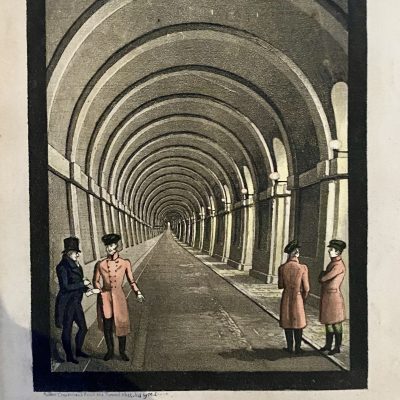
A View of the Western Archway of the Thames Tunnel
This print shows two pairs of men either side, in conversation in the tunnel, three of whom are wearing red jackets, one other in a black coat. The man in the black coat, wearing glasses and holding a paper and pen, appears to be Marc Brunel. It is likely the other figures represent other engineers …
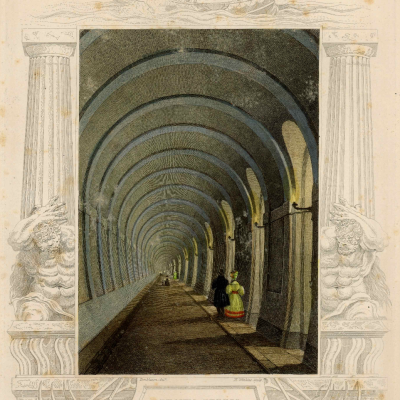
“Thames Tunnel” hand-coloured print by William Tombleson
Printed image of the Thames Tunnel, done in steelplate engraving, with a border made up of doric columns supported by Atlas (?) on either side, a boat with British flag and Britannia sailing along the top edge, motifs of oars, and the words “Thames Tunnel” along the bottom. The central image has been hand-coloured. Below …
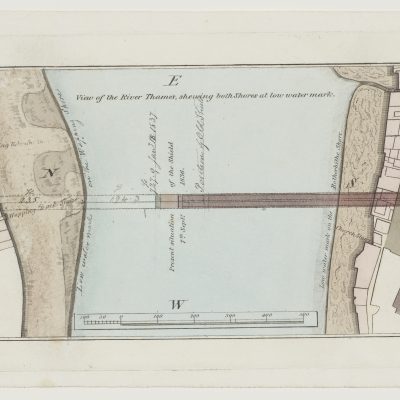
Map showing the progress of the Tunnel
If you’d like a print of the artwork displayed above, you can purchase one from the ArtUK online shop.
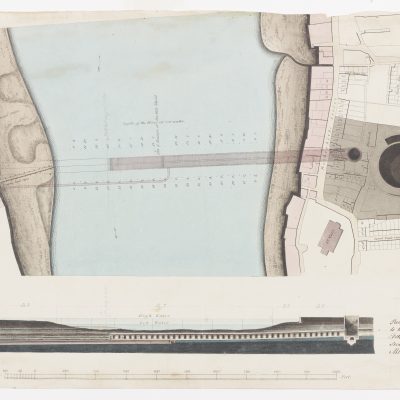
Lithographic sheet showing progress of the Tunnel
If you’d like a print of the artwork displayed above, you can purchase one from the ArtUK online shop.
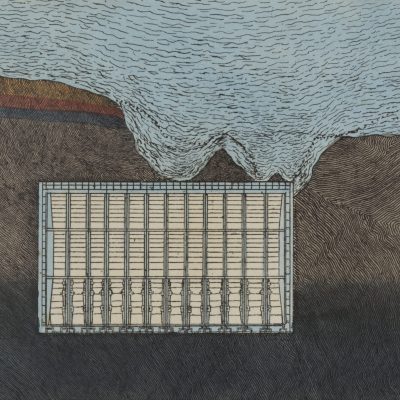
View of the shield
This watercolour wash view shows a cross section of the tunnel with the intrusion that caused the first flood on the 18th of May 1827. Unlike some of the other pieces in this collection showing the first flood (see LDBRU:2017.16 and LDBRU:2017.17), this piece is small in scale, at only 128mm x 90mm, and therefore …
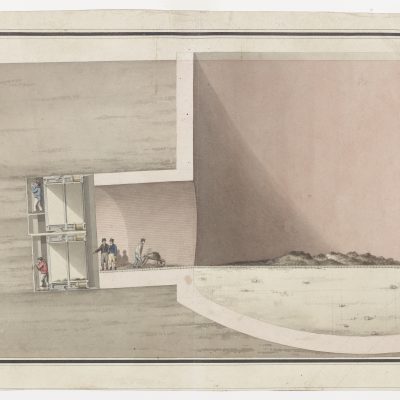
Watercolour of planned Shaft and section of a Tunnel
If you’d like a print of the artwork displayed above, you can purchase one from the ArtUK online shop.
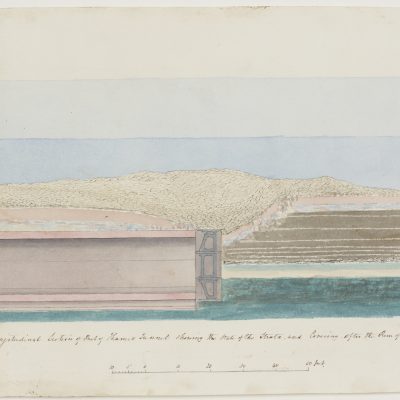
Side view of the Thames Tunnel after flooding
If you’d like a print of the artwork displayed above, you can purchase one from the ArtUK online shop.
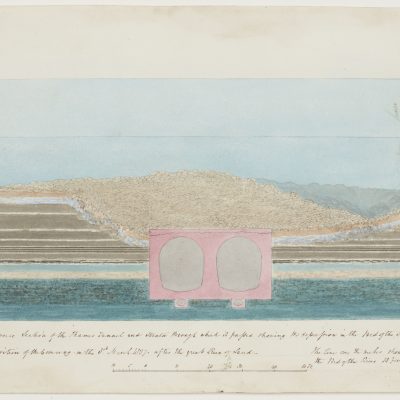
Cross-section of the Thames Tunnel after flooding
If you’d like a print of the artwork displayed above, you can purchase one from the ArtUK online shop.
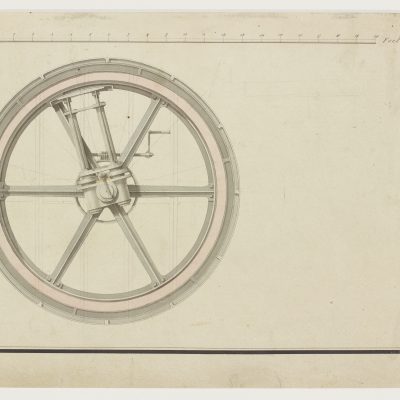
Watercolour of a cylindrical tunnelling shield
An early watercolour technical illustration depicting two cross sections of an early design for the tunnelling shield. This piece was likely drawn by Joseph Pinchback, Brunel’s chief mechanical draughtsman, and is cut from a sheet dated September 1818. See LDBRU:2017.5 and LDBRU:2017.20 for the complete page and other views of the design. Brunel’s patent no. …
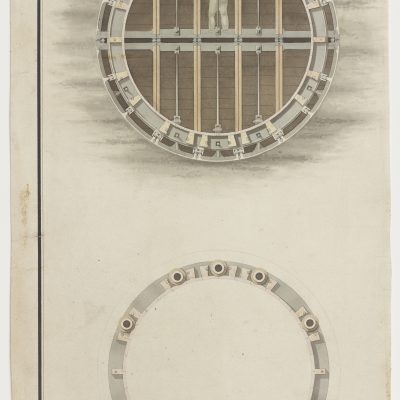
Two watercolour views of a cylindrical tunnelling shield
An early watercolour technical illustration depicting two cross sections of an early design for the tunnelling shield. This piece was likely drawn by Joseph Pinchback, Brunel’s chief mechanical draughtsman, and is cut from a sheet dated September 1818. See LDBRU:2017.5 and LDBRU:2017.20 for the complete page and other views of the design. In Brunel’s patent …

Side view of the flooded Tunnel
This watercolour shows a longitudinal section of the tunnel with two individuals inspecting the shield after the first flood of 18 May 1827, and is attributable to Brunel’s chief mechanical draughtsman, Joseph Pinchback. It is one of several pieces in this collection about the first flood, with others including LDBRU:2017.16 and LDBRU:2017.24, as well as …
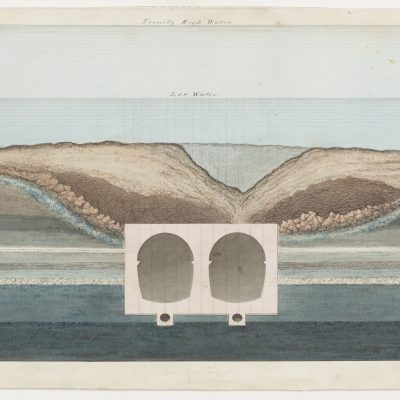
Cross-section of the Tunnel and displaced ground
This watercolour shows the effect the first flood of 18 May 1827 had on the riverbed, and is signed by Brunel’s chief mechanical draughtsman, Joseph Pinchback. It is one of several pieces in this collection which show the effects of the first flood. Others include LDBRU:2017.17 and LDBRU:2017.24, as well as Brunel’s descent in the …

Watercolour of the timbering for the removal of the old Shield
If you’d like a print of the artwork displayed above, you can purchase one from the ArtUK online shop.
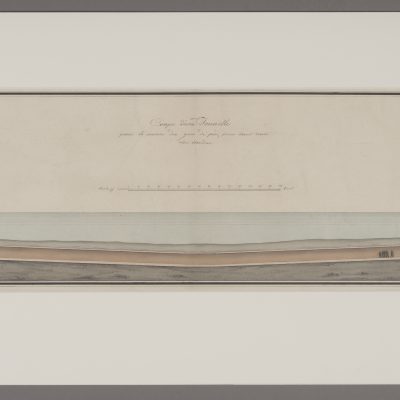
‘Cross-section of a Tunnel for the use of infantry, shown in its full extent’
This watercolour illustration, signed and dated by Joseph Pinchback, 1818 (‘Drawn by J. Pinchback, 1818’) shows a cross-section view of an early tunnel design. It is captioned, in Marc Brunel’s hand, ‘Coupe d’une Tonnelle pour le service des gens de pied, prise dans toute son étendue’, or ‘Cross-section of a Tunnel for the use of …
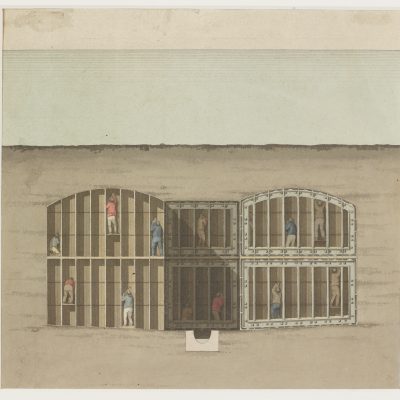
Watercolour of proposed three-part Shield
If you’d like a print of the artwork displayed above, you can purchase one from the ArtUK online shop.
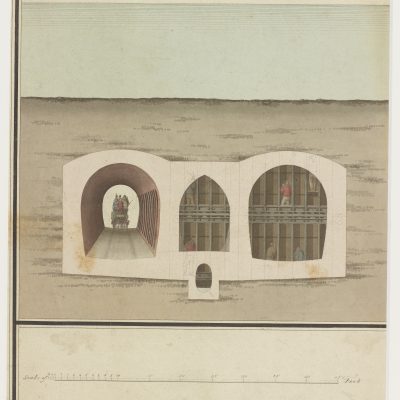
Watercolour of proposed three-part tunnel
If you’d like a print of the artwork displayed above, you can purchase one from the ArtUK online shop.
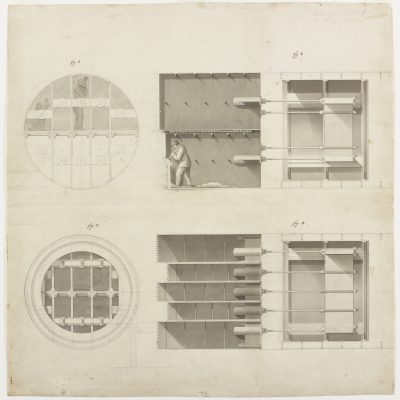
Four views of the Tunnelling Shield
This grisaille watercolour is a technical illustration of one of Brunel’s early designs for the Tunnel, which he likely drew himself. At some point, the page has been cut and squared off. It is a near-identical version of what appears in Brunel’s Patent no. 4204 “Forming tunnels or drifts underground” from January 1818, in which …
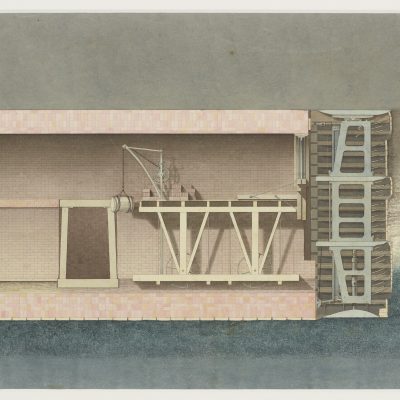
Watercolour of the Tunnel and Shield
This watercolour piece dates from the early 1820s and depicts a chronology of the tunnelling process. On the far right-hand side, the different strata of earth are distinguished with different patterns and colours. On the left is the tunnelling shield, its movable stage, which supplied bricks and other building materials to the front, and two …
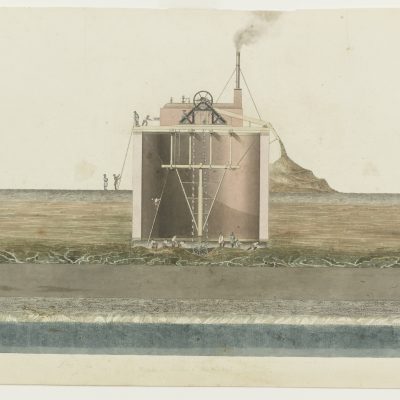
Watercolour of the Rotherhithe Shaft
A watercolour cross-sectional illustration of the tunnel shaft, likely done in 1825. On the 16th of February 1825, permission was granted to clear the ground for a sinking shaft 50 feet in diameter and 42 feet in height. Shortly after, on the 3rd of March, the brickwork began and thus marked the beginning of the …
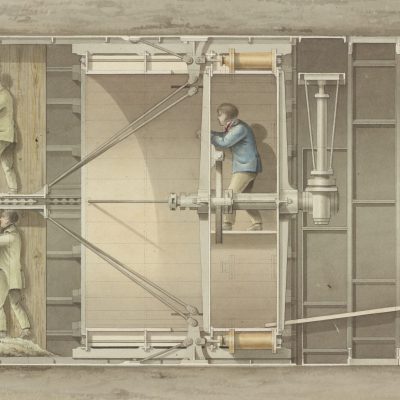
Watercolour of proposed tunnelling Shield
An early watercolour technical illustration of the tunnelling process. This piece was likely drawn by Joseph Pinchback, Brunel’s chief mechanical draughtsman, and is cut from a sheet dated September 1818. See LDBRU:2017.5 and LDBRU:2017.20 for the complete page and other views of the design. Two miners are featured excavating earth inside individual compartments. Close inspection …
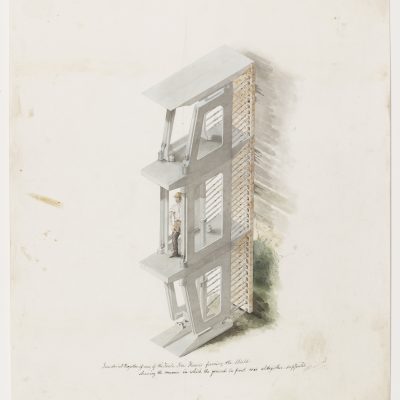
Watercolour of one frame of the Shield
This watercolour, signed R. Beamish (Richard Beamish, resident engineer on the Tunnel), provides a clear visualisation of how the tunnelling shield was formed and worked. It is captioned Isometrical projection of one of the Twelve Iron Frames forming the Shield/ shewing the manner in which the ground in front was altogether supported, and depicts a …

Yates shaft watercolour
A fine and important topographical water colour of the Shaft of the Thames Tunnel by George Yates, dated 1835
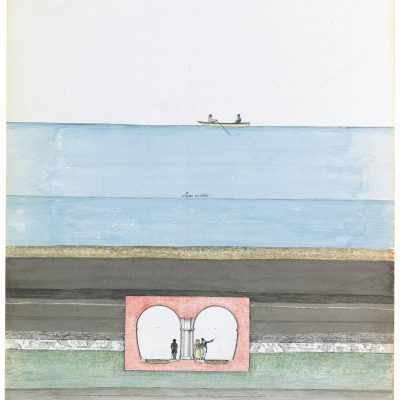
Brunel tunnel watercolour
Watercolour of the Thames Tunnel and river above, signed by Marc Brunel, 1835
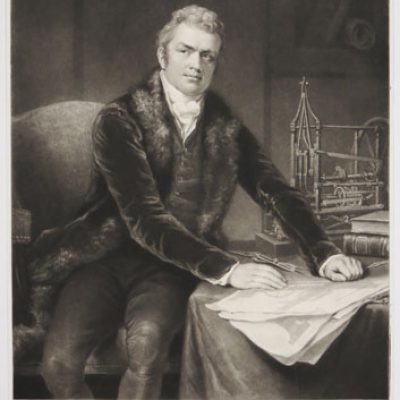
Marc Brunel mezzotint
This print depicts Marc Brunel early in his career in Britain, before work had begun on the Thames Tunnel. The print was published on 30 March 1815 by Charles Turner (1773-1857), a London engraver and publisher. The print reproduces a painting of Brunel done in 1812-13 by James Northcote which was first exhibited in 1814, …
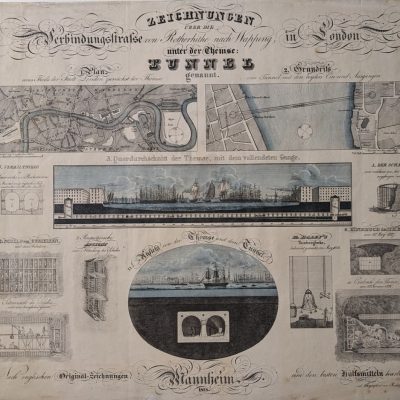
German lithographic print of the Thames Tunnel
Two-colour German lithographic print of twelve views of the Thames Tunnel with descriptive text, printed in March 1828 by Rudolph Schlicht in Mannheim and entitled 'Drawings of the Road linking Rotherhithe to Wapping in London under the Thames, called The Tunnel'.
